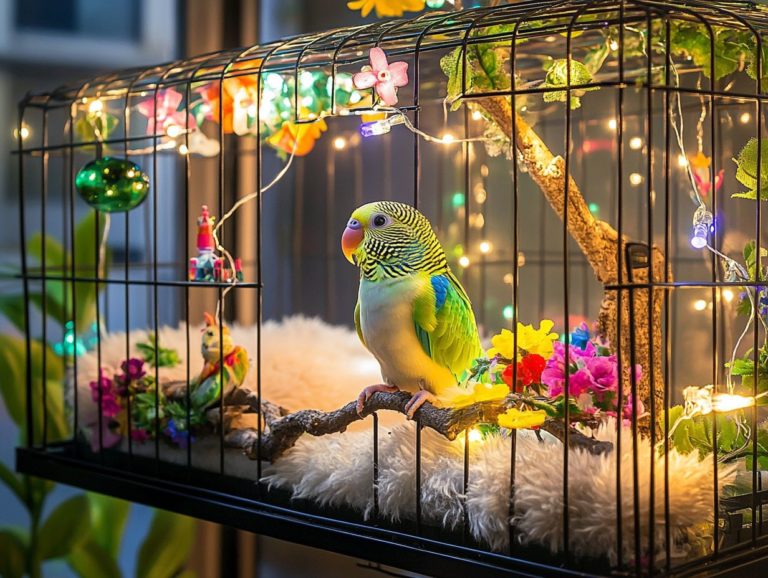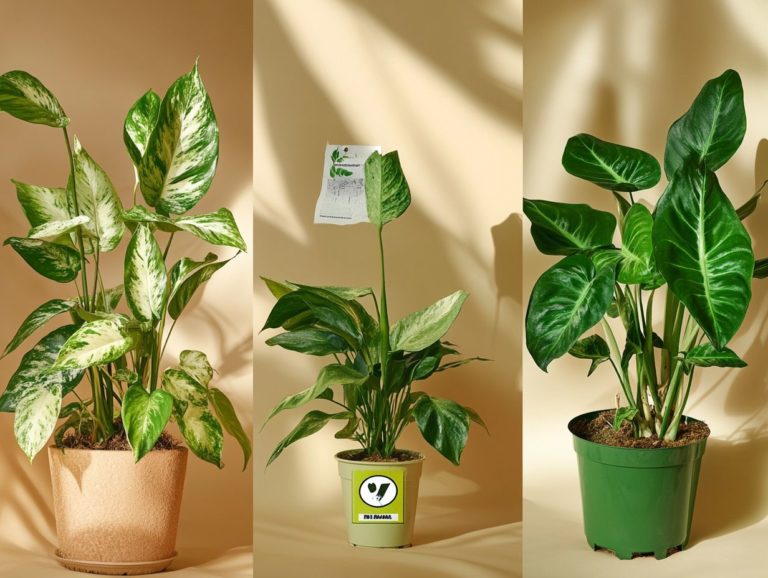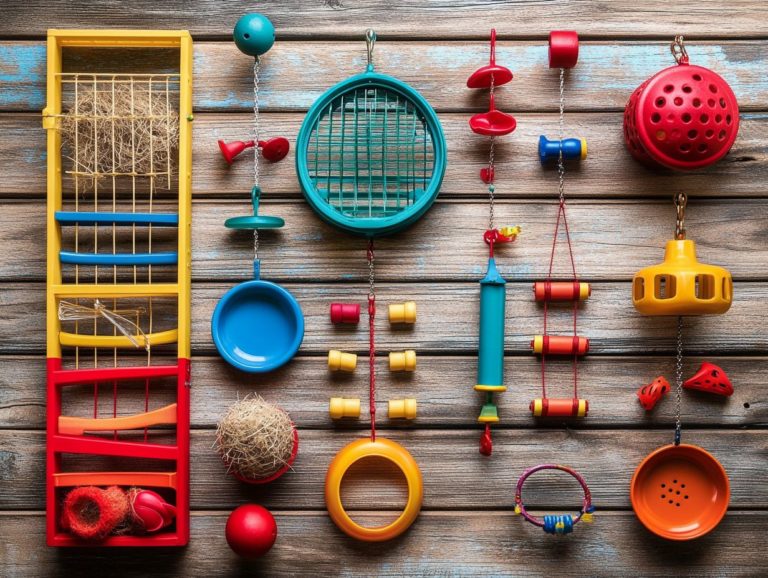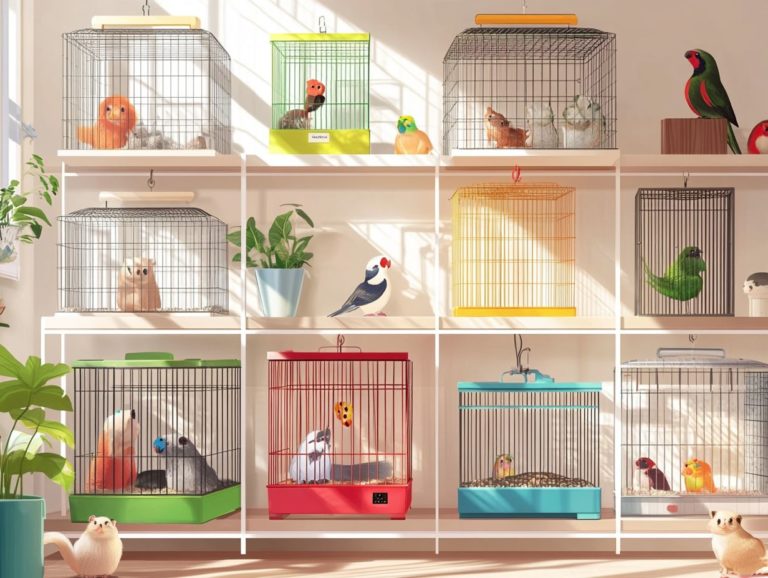Cage Features That Enhance Bird Well-Being
Choosing the right cage for your feathered companion is essential for their happiness and health.
From size and shape to material and construction, every detail significantly impacts your bird’s well-being. This guide delves into the essentials of cage selection, highlighting how size affects comfort, the importance of using safe and durable materials, and the need for enriching perches and toys.
This guide also covers effective cleaning techniques and the ideal placement of the cage to create a safe and cozy environment. Dive in and discover how you can ensure your bird thrives in a space that truly caters to their needs.
Contents
- Key Takeaways:
- Size and Shape Considerations
- Material and Construction
- Perches and Toys
- Cleaning and Maintenance
- Location and Placement of Cage
- Frequently Asked Questions
- What cage features enhance a bird’s well-being?
- Why should you include various perches in your bird’s cage?
- What toys benefit birds in their cage?
- Why is variety in food and water options important for birds?
- How do cage features impact a bird’s mental health?
- What cage features can negatively impact a bird’s well-being?
Key Takeaways:
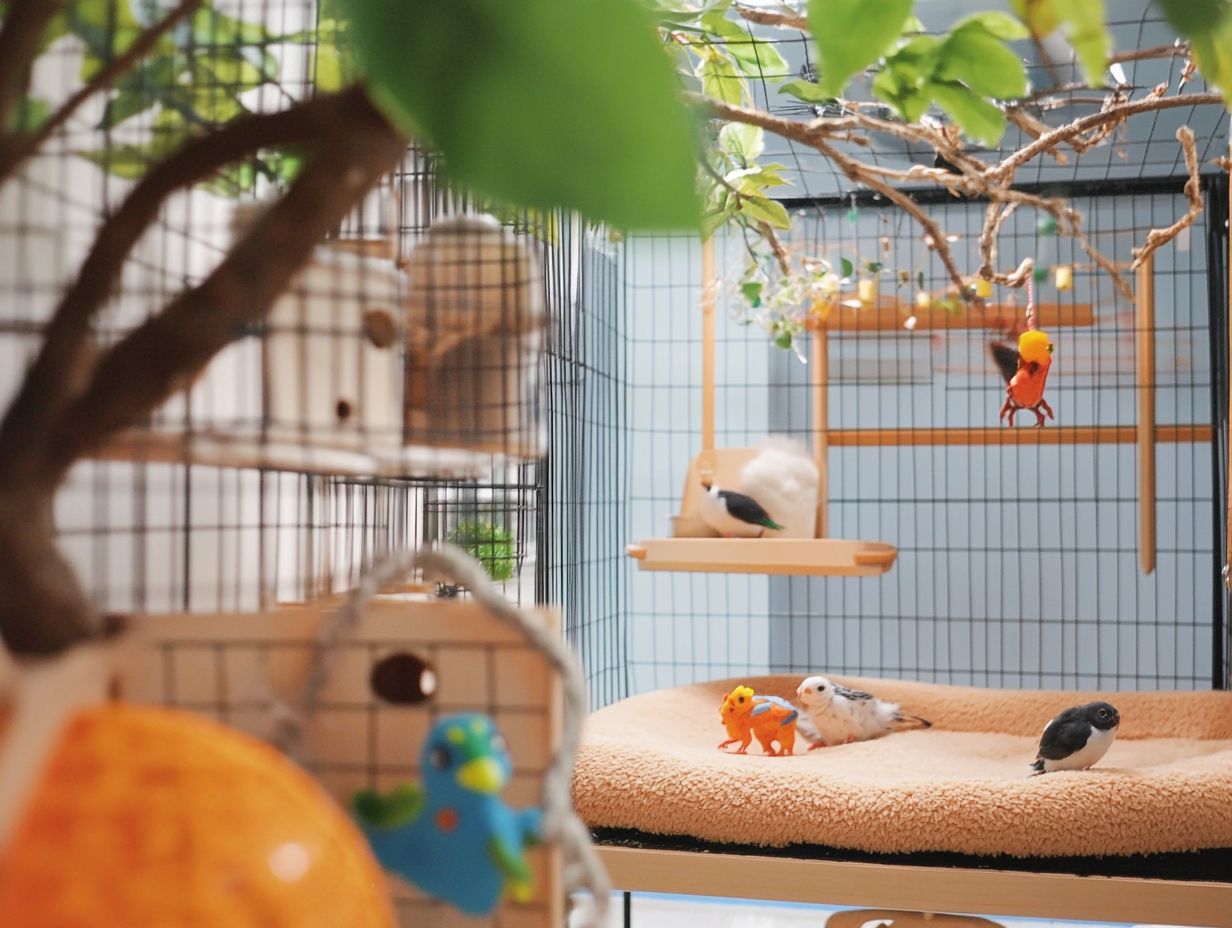
- Choose an appropriate cage size and shape to ensure your bird’s well-being and comfort.
- Use safe and durable materials in the construction of the cage to promote your bird’s safety and longevity.
- Provide enrichment through a variety of perches and toys to keep your bird mentally stimulated and physically active.
The Importance of Choosing the Right Cage
Selecting the right cage for your pet bird is crucial for its overall health and happiness. A comfortable cage serves as a safe haven and a stimulating environment where your feathered friend can thrive and explore.
Key factors like size, shape, and materials are essential in ensuring that your bird feels secure and at ease in its habitat. The ideal cage not only meets your bird’s physical needs but also incorporates essential cage accessories for pet birds that encourage mental stimulation and social interaction, crafting a living space that nurtures its natural behaviors.
By paying close attention to the specific requirements of different species such as parrots, conures, and cockatoos you can significantly enhance their living conditions. Each bird has unique space needs and behavior patterns. For example, larger birds like cockatoos thrive in spacious cages equipped with multiple perches and toys that promote climbing and play.
Prioritizing safety by avoiding toxic materials and sharp edges will protect your pet from potential harm. Incorporating activities like swings and searching for food toys will keep boredom at bay while stimulating mental agility.
Creating a well-thought-out cage setup reflects your commitment to your bird’s well-being, allowing it to express its natural instincts within a secure environment. To ensure you choose the best options, consider the top features to look for in pet bird cages.
Size and Shape Considerations
Understanding the size and design of a birdcage is vital for creating an optimal habitat that fosters your pet bird’s well-being and joy, including the benefits of natural materials in bird cages.
How Cage Size Affects Bird Well-Being
Choosing the right cage size is vital for your bird’s health and happiness, as it determines the space available for movement, play, and social interaction.
When birds are confined in cages that are too small, stress can set in, leading to behavioral issues such as excessive vocalization, feather plucking, and even aggression. Each bird species has its own space requirements that reflect its natural behaviors. For instance, larger birds like macaws and cockatoos need plenty of room to stretch their wings and explore their environment.
An ideal cage should be long enough to support horizontal flight and spacious enough to accommodate safe chewing materials and activities like searching for food. Incorporating natural perches in cages can enhance your bird’s environment, while the spacing between bars is essential to prevent accidental injuries. Additionally, extra room for enrichment activities like hanging toys and swings is vital for promoting mental health and reducing stress.
Material and Construction
Selecting the right materials and construction for a birdcage is crucial in creating a safe and secure haven for your feathered companion. Your choice significantly impacts your bird s well-being and overall happiness.
Safe and Durable Materials
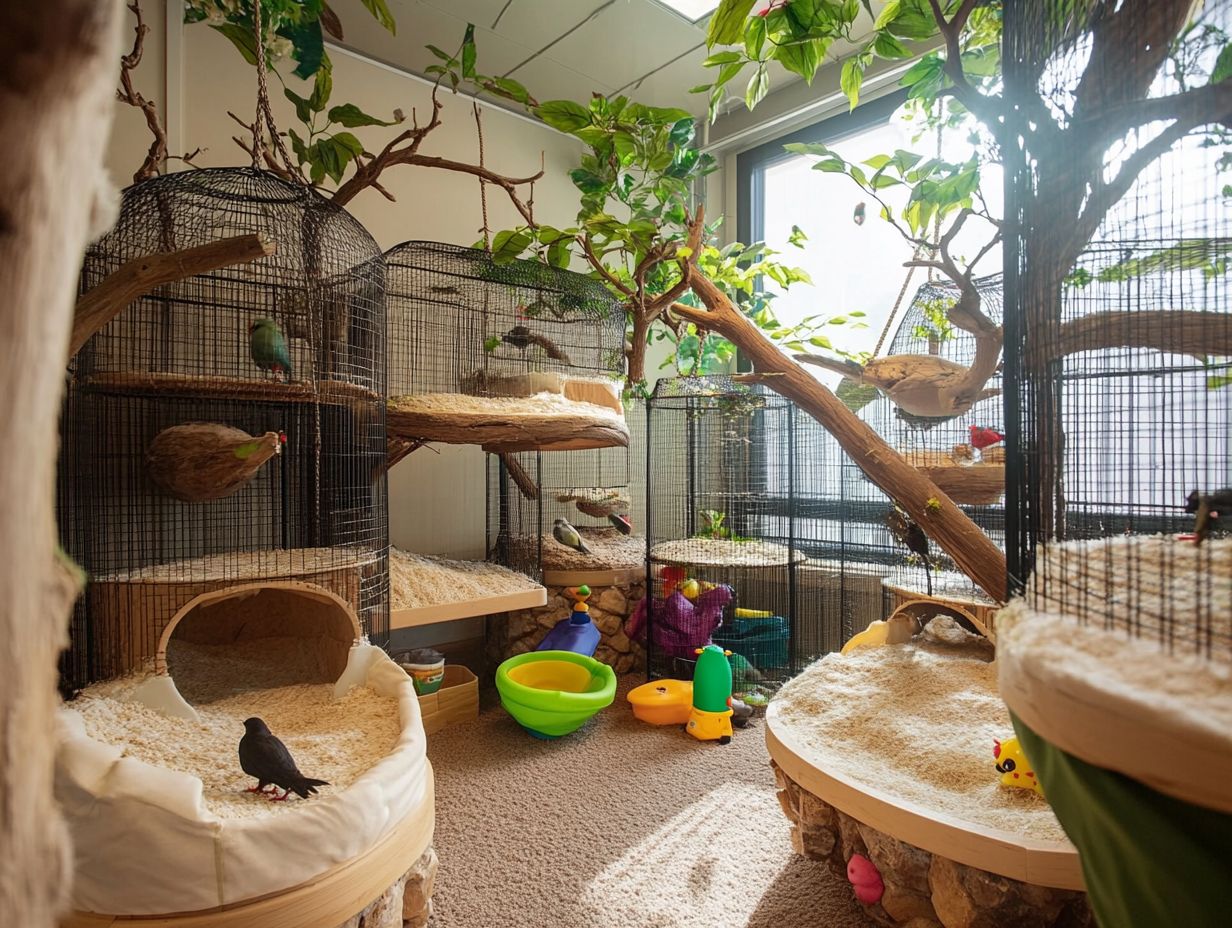
Choosing safe and durable materials for your bird’s cage is vital. Options like stainless steel and non-toxic wood are great because they last longer and are easier to maintain.
Stainless steel resists rust and corrosion, ensuring your bird’s habitat remains safe and hygienic. Meanwhile, non-toxic wood enhances the aesthetic appeal while providing a healthier environment.
Avoid using painted or treated metals as they may release harmful chemicals into the air, jeopardizing your bird’s health. Prioritizing the right materials contributes to your pet s quality of life.
Perches and Toys
Use a variety of perches and toys to keep your bird mentally stimulated and physically active. This creates a happier, healthier environment.
Providing Enrichment for Birds
Enrichment through toys and activities is essential for your bird’s mental well-being and happiness. Incorporate activities like foraging opportunities, which means hiding treats for your bird to find, and interactive toys that move or make sounds.
These elements stimulate your bird s instincts, keeping them active and mentally sharp. They also promote better health and significantly reduce stress, crucial for a high quality of life.
Types of Perches and Toys to Consider
When setting up a birdcage, consider various types of perches and toys to ensure a safe and enjoyable environment for your feathered friend.
Different perches cater to various species. For example, platform perches provide a spacious resting area, making your bird feel secure. Natural wood perches offer a textured surface that supports healthy foot development, while rope perches can be shaped into fun climbing routes.
The toys you choose should encourage play and mental stimulation. Foraging toys keep your bird entertained by challenging them to find hidden treats. Provide safe chewing materials made of non-toxic wood to promote healthy beak maintenance and satisfy natural instincts.
Cleaning and Maintenance
Cleaning your bird’s cage regularly is essential. It keeps your bird healthy and improves its overall happiness.
Proper Cleaning Techniques
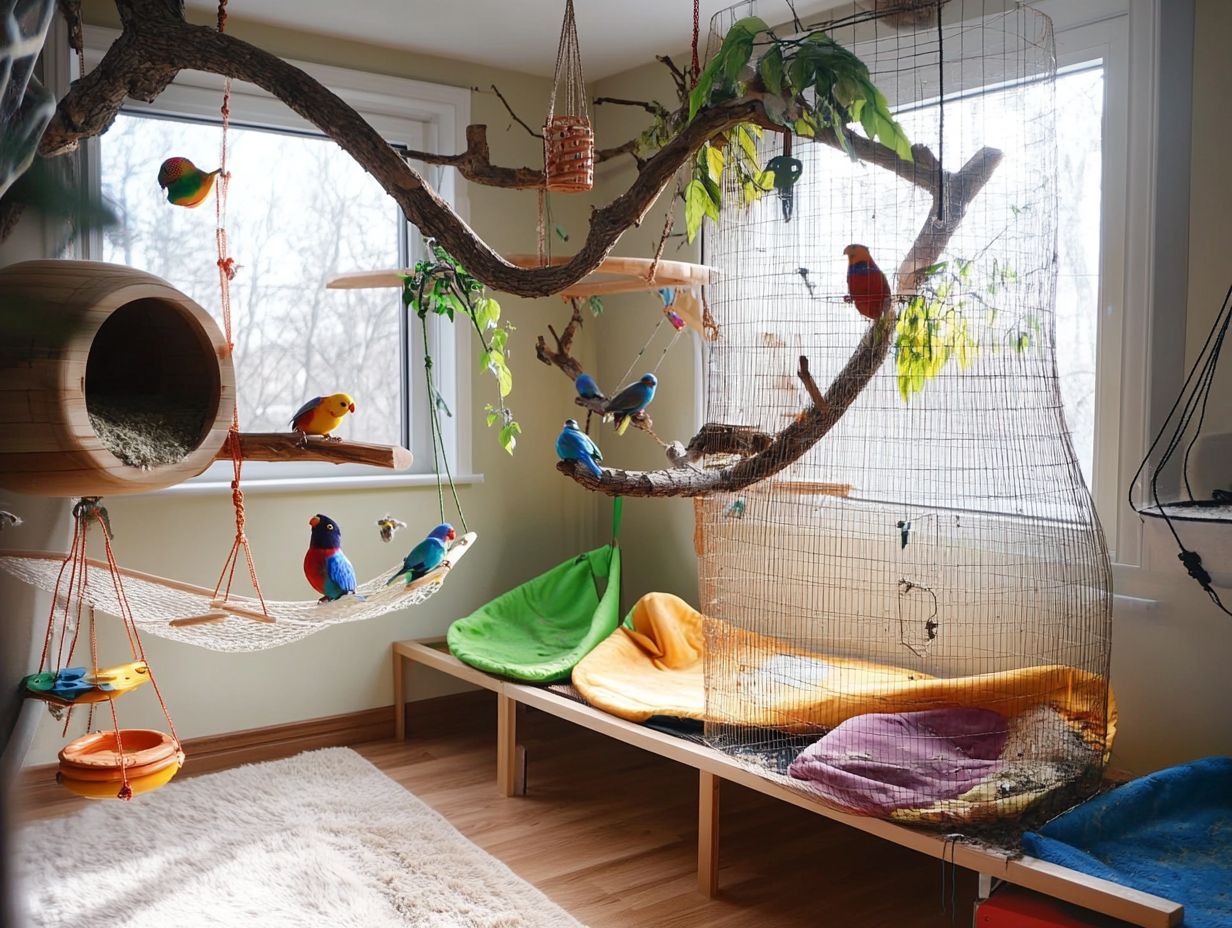
Implementing proper cleaning techniques is crucial for a clean and healthy environment for your pet bird. Regular maintenance enhances your bird’s habitat and prevents illnesses.
Disinfect surfaces like the cage bottom and walls to stop harmful bacteria from growing. Don t forget the perches and toys; scrub them thoroughly to remove dirt and droppings.
Use safe cleaning products made for birds avoid any chemicals that could be toxic to birds. A clean cage contributes to hygiene and your bird’s overall happiness, providing a nurturing environment where they can thrive.
Location and Placement of Cage
Choosing the right spot for your bird’s cage is key. Understanding the importance of cage location for birds creates a comfortable and stimulating environment that boosts your bird’s well-being.
Creating a Safe and Comfortable Environment
Creating a safe and comfortable environment for your pet bird is vital for its overall well-being and happiness. This involves carefully choosing elements like cage size, placement, and the setup within its habitat.
A spacious cage provides ample room for movement and exploration. Placing the cage in a location that avoids direct sunlight, drafts, and loud noises helps maintain a serene atmosphere. Additionally, making your bird’s cage more inviting by enhancing it with suitable toys, perches, and hiding spots significantly contributes to your bird’s emotional well-being.
Remember, birds flourish on social interaction, so regular engagement with you or even other birds is essential for fostering a sense of security and joy.
These thoughtful considerations not only promote physical health but also deepen the bond and understanding between you and your feathered companion.
Frequently Asked Questions
What cage features enhance a bird’s well-being?
Key features include various perches for foot health, engaging toys for mental stimulation, and multiple food and water stations.
Why should you include various perches in your bird’s cage?
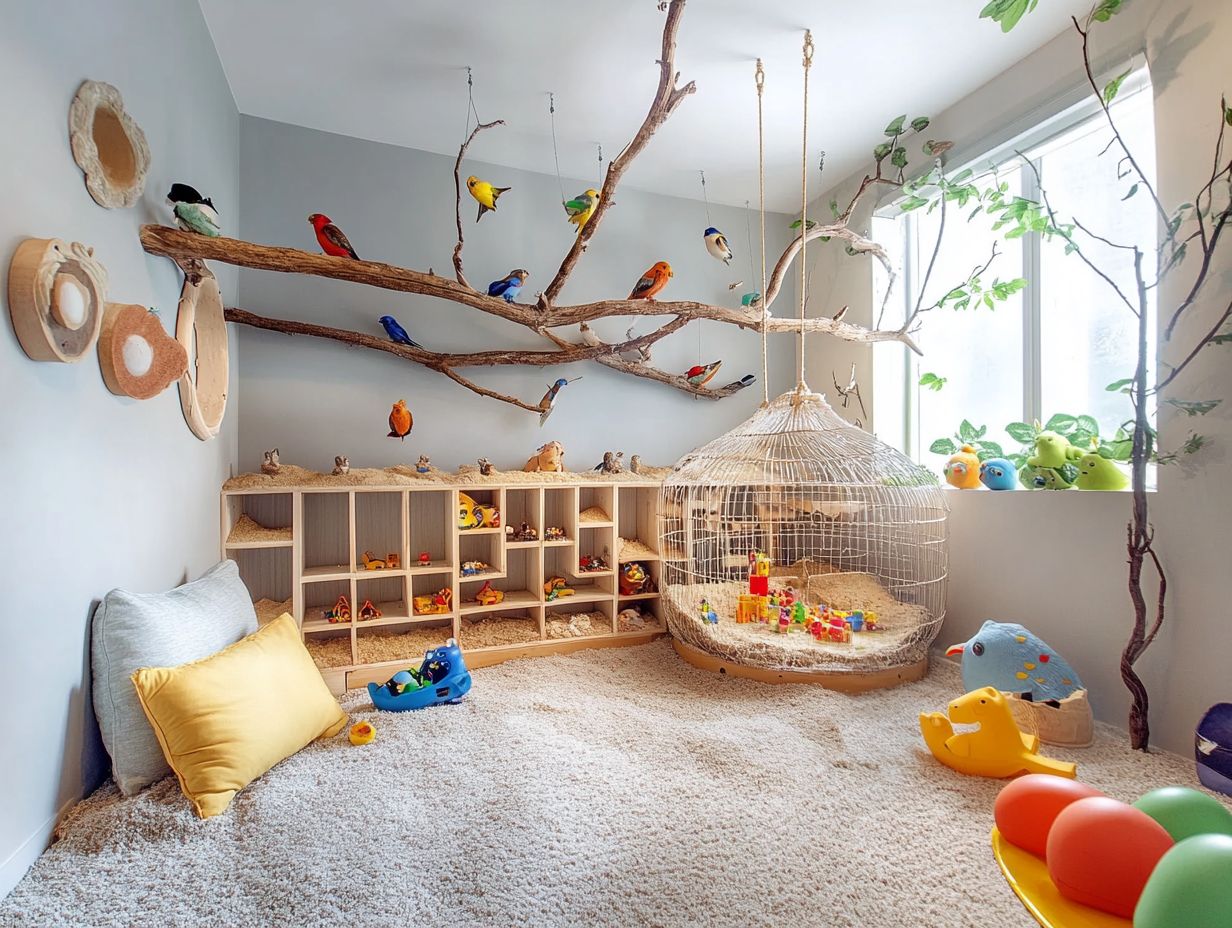
Having perches of different sizes, textures, and materials promotes foot health and helps prevent boredom.
What toys benefit birds in their cage?
Toys that encourage natural behaviors, such as foraging and chewing, are beneficial. Consider puzzle toys, chew toys, and swings for engaging activities.
Why is variety in food and water options important for birds?
Birds thrive on variety in their diet. Different types of healthy food and water options keep them mentally and physically stimulated, ensuring they receive all necessary nutrients.
How do cage features impact a bird’s mental health?
Cage features like bird-safe perches and toys provide mental stimulation and prevent boredom, which is crucial for overall mental well-being, as detailed in our guide on creating a comfortable cage environment.
What cage features can negatively impact a bird’s well-being?
Small, cramped cages, lack of natural light, and inadequate ventilation can harm a bird’s well-being. Give your bird plenty of space to thrive with regular maintenance and cleaning!


